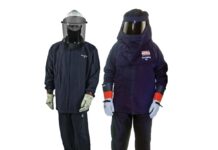A die-casting die can reserve surprises, from the ecological point of view, when it contributes in forming a component for petrol engines able to reduce the emissions of the car sector.
The European Parliament should be grateful to the die presented on this occasion, considering that the same institution has confirmed the minimum targets of emission reduction of the car sector to 130 grams of carbon dioxide (CO2) for each kilometre run. Besides, it has introduced a long-term goal: 95 grams of CO2 per kilometre within 2020.
The not-compliant automotive companies will have to shell out 95 Euros for each gram of CO2 exceeding the targets for each sold car. Therefore, a producer is compelled to invest to reach these goals of polluting emissions. General Motors (Gm) has already started, optimizing for instance the design of the lower cover of the camshaft for Opel four-cylinder gasoline engines. The particular object of this article is equipping the new Opel/Vauxhall engines in production since the end of 2013.
The credit goes, then, to the company Form Srl at Legnaro (in Padua province), technical centre for the implementation of die-casting dies, which has designed and manufactured the die-casting die for the production of the said object. Form Srl is specialized in the design and manufacturing of die-casting dies of medium and big size aluminium and light alloy components.
The specific features of the object to be implemented
The lower die-cast cover, made of AlSi9Cu3 alloy, of a camshaft for 4-cylinder gasoline engines, is composed by two parts (figure 1) with the bigger inferior part to be coupled with the upper one. Inside, a patented oil filtering and recycling system operates. Form has made both dies, the big one (object of this article) has been designed according to the dimensional lines of the small one. Obviously, the coupling, which occurs through a liquid sealant, must have a very strict tolerance.
Form has collaborated with a Dutch buyer (Fonderia Brabant Alucast the Netherlands) to develop the division lines between matrixes and carriages, with the introduction of ribs to improve the burr trimming. Besides, it was necessary to correct the division between matrix and inserts on internal undercuts, to avoid the presence of steel spikes or surges and then the breakage risk. It was necessary to add some drafts and radii to the item, in order to strengthen the casting parts and then to improve the drawing.
In a certain sense, the final customer was compelled to modify some shape tolerances in critical zones, where possible.
Finally, they have made some modifications to the three-dimensional (3D) model of the object, according to the final customer’s requests, since the object was still in development phase at the order time.
There is always something to improve in terms of casting and trimming possibilities, as well as of die maintenance, to the extent that Form Srl works on the same CAD platform as the final customer. Exactly this integration has allowed introducing all the mentioned modifications directly in the native model.
Die and software used
The design environment is equipped with excellent hardware and software, within which operate Pro/ENGINEER WildFire, Unigraphics NX for the solid Cad modelling; and PowerMill by Delcam in CAM ambit. The environment in which the object was developed is NX by Siemens, that is to say the historical platform of General Motors. The die was instead developed with ProENGINEER WildFire, which offers some specific design tools or instruments for dies.
The object showed two undercut zones on the inner cover side and to be able to form it, they turned to a technical solution derived from the plastic sector but adapted to the specific case.
To form these zones, they have implemented two inserts, moved by table, which are drawn from the matrix together with the ejectors during the piece-drawing phase. The two inserts slide on inclined guides (as shown by the figures number 7 and 8) in such a way that, coming out, they are extracted from the piece. All that has been manufactured in sturdy manner and turning to PVD coatings (ALTICROME by MINITOOLS) of the sliding parts and of the inserts, to avoid seizures during the operation and the deformation of the drawn piece.
Another characteristic of this cover is the position of the feeding system, above the big inferior and lateral carriages to preserve the seal seat at the cover base from wear.
Successive stages and machining characteristics
The die machining operations were carried out on three- and five-axis Deckel Maho milling machines while EDM was executed on Charmilles Technology EDM machines. All casting surfaces were polished, paying particular attention to the walls in drawing direction. The parts that form the outer side of the cover, then the fixed matrix and the carriage inserts, were treated by shotblasting to attain a constant roughness level. This has allowed improving the piece filling as well as the object aesthetics. This operation creates a sort of thermal barrier, so that aluminium slides better and fills the die, besides inducing (as well as mechanical shot peening) the surface compression of steel: and this grants a prolonged resistance to hot cracks during the life of the die itself.
The object in question will be then assembled to the upper part. The criticality was represented in this case by the coupling between the two parts along the whole parameter where they form a joint and sealing is assured by a liquid sealant laid off between the two parts during assembly. The deviation between the two parts was to be limited by a very strict shape tolerance along the whole perimeter: to realize the difficulty, it is sufficient to think of the various sizes and conformations of the two objects for which also a different shrinkage factor has been considered.
To hit the target, they therefore proceeded first to the die making for the upper part; and then they started with the other die. Before proceeding to the finishing of the latter, they have waited for the results both of the sampling and of the dimensional testing of the first, in order to be able to compensate possible deformations with the second.
Great attention was paid to the die maintenance already in design phase, especially in its most delicate part: the above mentioned movements. They have provided for this the possibility of dismounting the single parts of the mechanism, gaining access to the rear part of the die without having to disassemble it.
Besides, since the lower carriage will accumulate filth in time, they have realized some discharge channels under it to convey aluminium pieces and the coolant that might stop there.
The plant for the water and oil feeding, for the cooling and the thermal regulation of the die, has been fully implemented with rigid pipes and with heavy connections for high pressure (figure 6). In this way, they avoid the crushing or tearing risk represented by the use of flexible pipes.
Besides, the die is equipped with plates made of high-strength plastic material, which insulate it from the machine plans. The material is specific for the application and grants the thermal and galvanic insulation, as well the compensation of possible deformations of the machine plans, which might deform the die.
All figure pins are locked by threaded rod directly from the rear side of the die, thus enabling their fast replacement without having to disassemble matrixes and without either the need of removing the die from the press.
Identity card of a die
Manufacturer: Form Srl
Materials: Forming parts in remelted ESR 1.2343 steel
(W300 ISOBLOCK BOHLER)
Sizes: Toolholder sizes +die rear side
1450x1100x1050 mm
Weight: 13 t
Use: Die casting of a cover made of AlSi9Cu3 alloy
Design methodologies: CAD NX, ProENGINEER
Production starting up+: CAM Powermill
Machining technologies: Milling, EDM, polishing, shotblasting
Expected production: 200,000 pieces/year
Maintenance: See text



